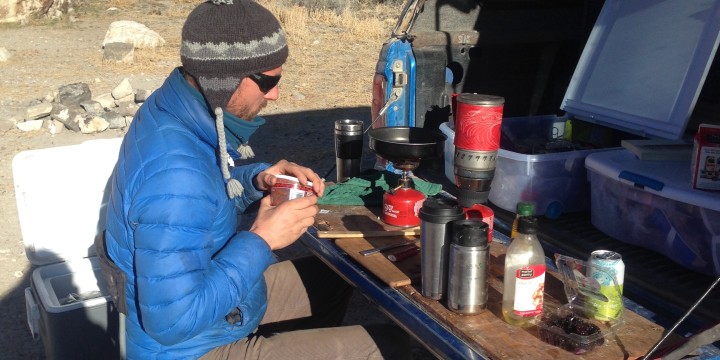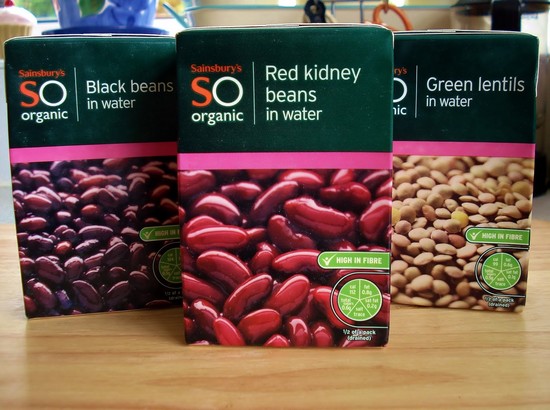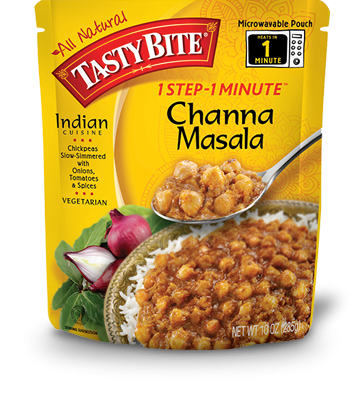Steph Davis Answers: “Any Advice for a Healthy Dirtbag Diet?”
By Steph Davis
Renowned climber and long-time MSR ambassador Steph Davis answers your questions about climbing, fear, challenges, equipment, injuries, and other core topics that come with a living life in high and wild places.
“Any tips for creating a healthy, plant-based dirtbag diet?”

The great thing about eating plant-based when living out of a vehicle or a backpack is that most of your food items won’t spoil as fast or become bacteria-ridden.
I highly recommend having a stove, in general. If you’re fully car camping, you have a lot of options, from the big double-burner propane tank setup to a durable single-burner camp stove. If you’re in someone else’s car or potentially backpacking, invest in a small, light stove and a titanium pot. My favorite is the MSR PocketRocket (inexpensive and lightweight), and the Titan pot set (not as inexpensive, but you will love it for the rest of your life).
I eat generally the same when camping as at home, with some exceptions. For example, at home I make my own soy milk and tofu, and I don’t do that when camping.
Basically you always have a staple food box with your dry things, oil, spices, and non-perishables. And then you have your snack bag (I usually use a canvas grocery bag for the more crushable stuff and just keep it on top or in the front seat area), and/or a cooler for some fruits, veggies and tofu.
One key item for the staple box is quinoa. Quinoa is high in protein and cooks relatively fast compared to rice. It has a great flavor that’s equally good for dinner (with stir fried vegetables, beans, or chili), lunch (make a quinoa salad by mixing in a matrix of finely chopped vegetables and garbanzos or black beans), or breakfast (stir in some soymilk, cinnamon, sliced apples or raisins). You can cook up a pot of it and keep it around the next day too. It’s really tasty plain with a little bit of Braggs liquid aminos and nutritional yeast sprinkled over it.
Lentils are also high in protein and cook relatively quickly, usually about 20 minutes. If you really need, or prefer, to conserve fuel, you can put quinoa (or rice) and lentils in a couple of new plastic zip bags (double bagged to make sure you don’t have a leak) with some water. Keep the bag in your car or pack for a day or overnight, and you’ll cut down on the cooking time by at least half when it’s time to make dinner. Lentils with quinoa, vegetables, tomatoes, curry, a little can of coconut milk and some spinach or kale stirred in is a delicious belly filler!
I’m not a huge fan of canned food in general, but I do like to eat beans when traveling and camping. Even better, I’ve been able to find small boxes of cooked beans recently at health food stores.

I keep a few boxes of black beans and garbanzos in my food box, along with a big bag of quinoa. You can’t beat simple bean and veggie burritos with salsa after a good day of hiking or climbing, and you don’t even have to wash a bowl when eating outside! I keep grapeseed oil, salt, pepper, cumin, curry, red pepper flakes and cinnamon and a bottle of Braggs liquid aminos and a bag of nutritional yeast in the staple box, and some garlic and ginger root for stir frying. I like Bob’s Red Mill muesli, but you can also keep some plain rolled oats in your box, and some powdered soy milk, raisins and walnuts–this is great hot or cold for breakfast with a little cinnamon.
These don’t get used all the time, but I also keep small bags of dry lentil soup mix and black bean soup mix (you can usually buy these in bulk at health food stores), for times when I need to pack food for an overnight bivy or it’s too late to really cook. With these, you just need to add hot water.

I also store a couple packs of lentil or chickpea Tasty Bites in the food box, which you can get at most grocery stores and definitely at health food stores. If you have time and other items, you can cook some quinoa first, and then sauté some vegetables and add the Tasty Bite to the vegetables and serve it over the quinoa. You can also add an extra box (or can) of plain lentils or garbanzo beans to it, which will give you a fast and easy one-pot dinner for two people with one packet of Tasty Bites. And, in a pinch, you can eat it straight out of the bag cold.
These are all the staples that stay in the food box, and every few days or so I buy fruit and vegetables that are fairly durable–apples, bananas, grapefruit, onions, broccoli, mushrooms, carrots, and zucchini. Don’t forget that you can slice the skin off of broccoli stems and chop them up to add to stir fry or soup/chili/beans too! On days when I pass by a store, I always get some fresh tofu and spinach I can put into dinner that night–dark green leafy vegetables are the best, and can be hard to keep around on a trip if you don’t have a cooler.
For snacking, I like nuts and dried fruit, sometimes hummus and vegetables or crackers. If you feel you burn through a lot of energy, almond butter and crackers are easy and long lasting. And don’t forget chips and salsa to take the edge off while making dinner, and some good whole grain bread if you can find some!
Last but not least, always have canned seltzer water in the car so you can feel super uptown (and hydrated) sipping on your fizzy water as the sun goes down, while you cook up an awesome meal in the desert.
 Steph Davis is one of the world’s leading women climbers. She is also an avid BASE jumper and wingsuit pilot. Among her many accomplishments, she has completed free ascents of El Capitan, first ascents in South America, the Karakorum and the Arctic, and some of the hardest climbs worldwide. Considered a rock climbing visionary, Steph lives in Moab, Utah, or sometimes out of a Honda Fit, in a tent, or in her off-the-grid octagonal cabin near Indian Creek. She is a writer, loves to cook and believes in living a simple life.
Steph Davis is one of the world’s leading women climbers. She is also an avid BASE jumper and wingsuit pilot. Among her many accomplishments, she has completed free ascents of El Capitan, first ascents in South America, the Karakorum and the Arctic, and some of the hardest climbs worldwide. Considered a rock climbing visionary, Steph lives in Moab, Utah, or sometimes out of a Honda Fit, in a tent, or in her off-the-grid octagonal cabin near Indian Creek. She is a writer, loves to cook and believes in living a simple life.
